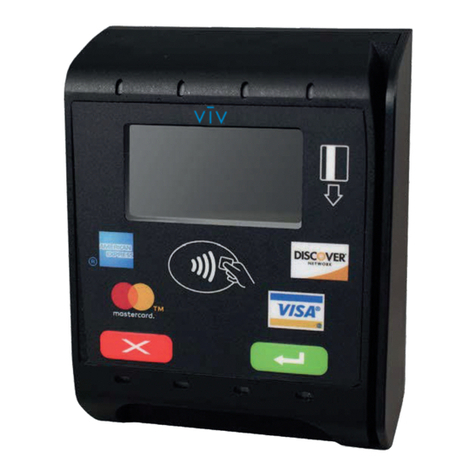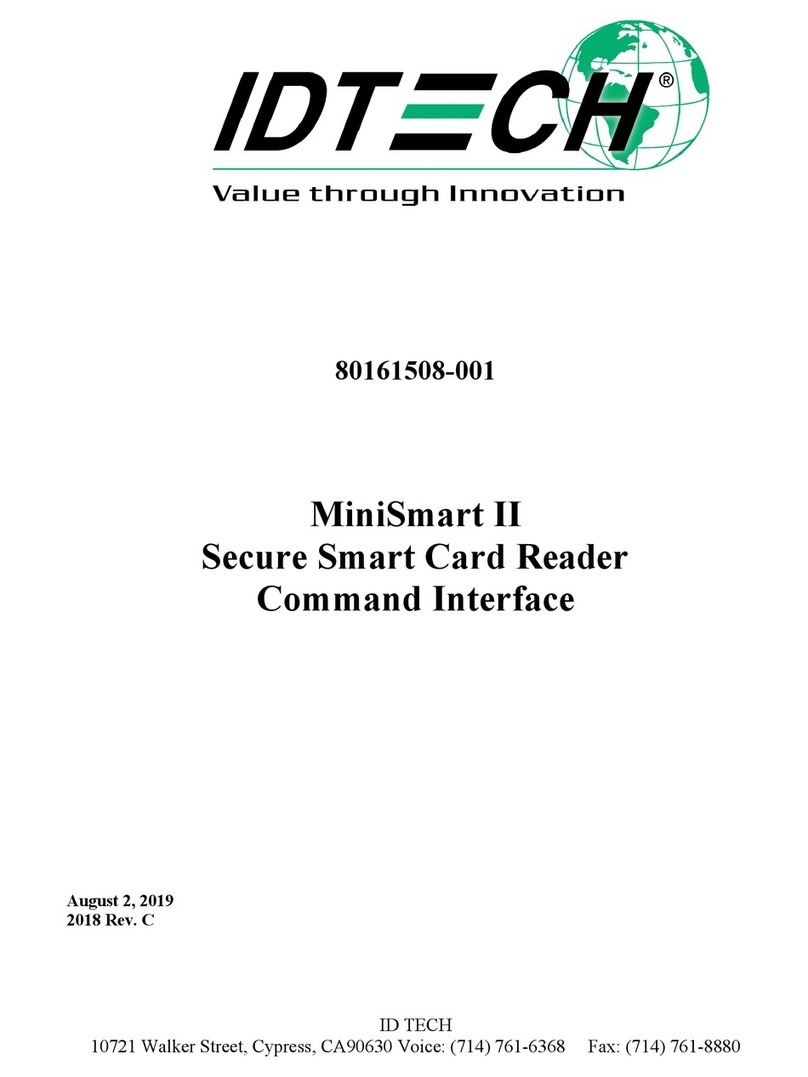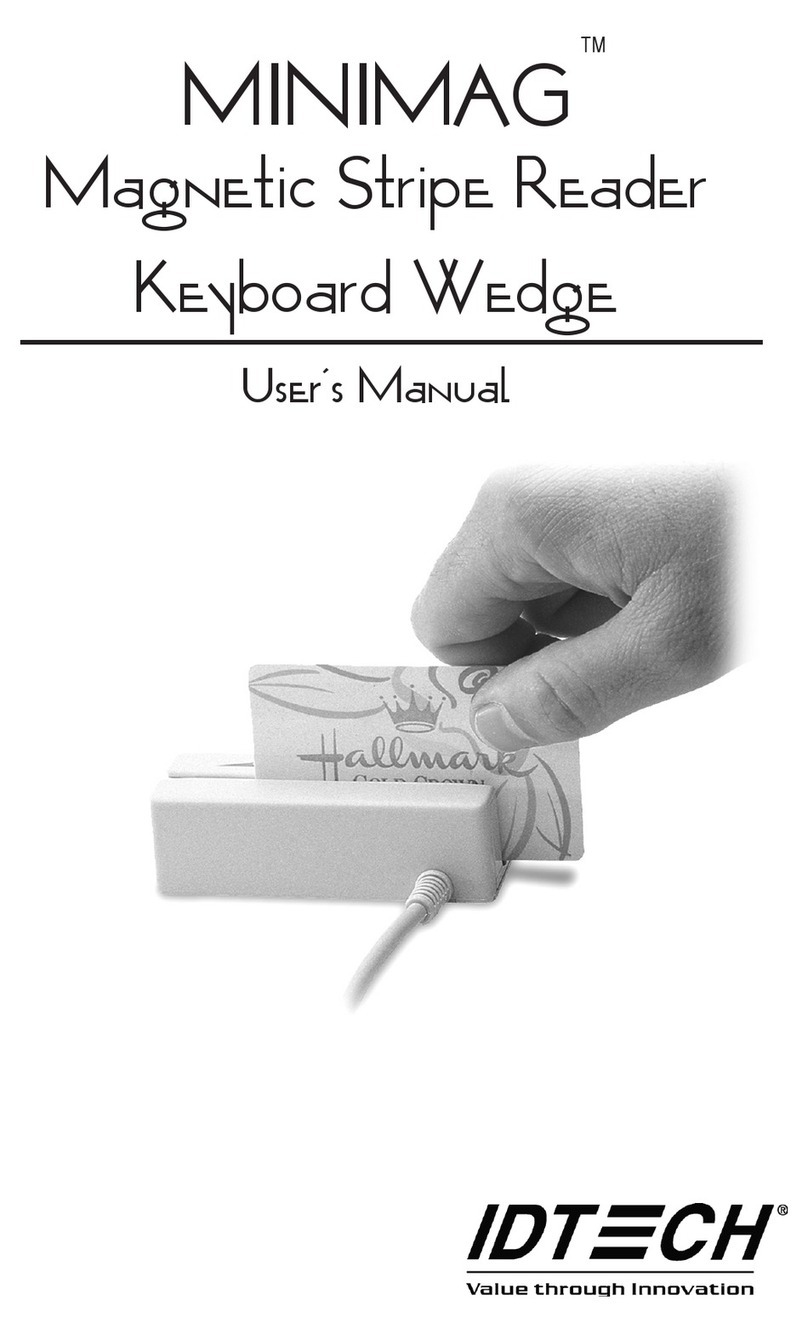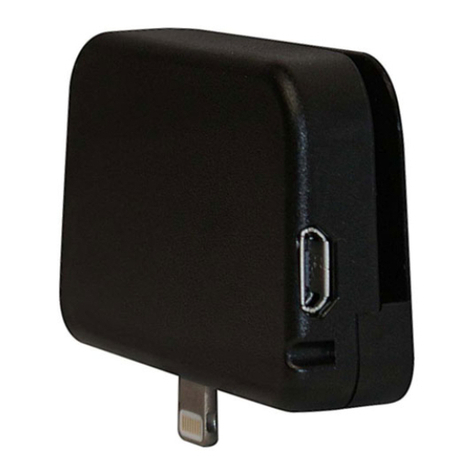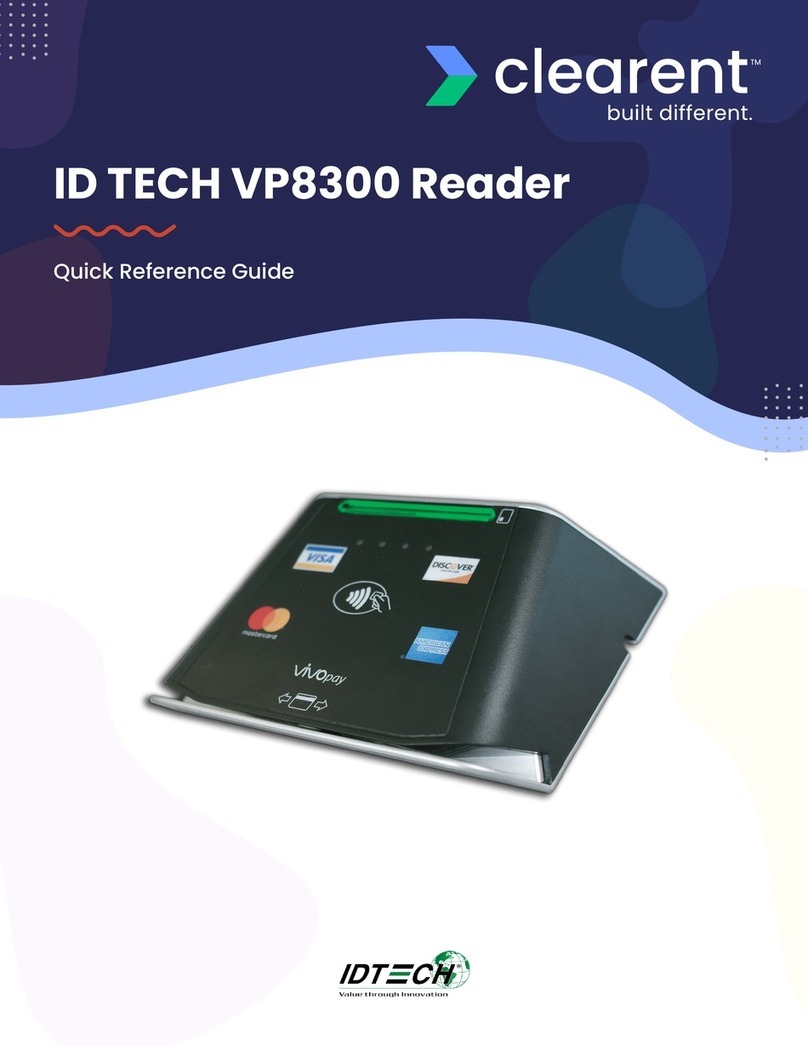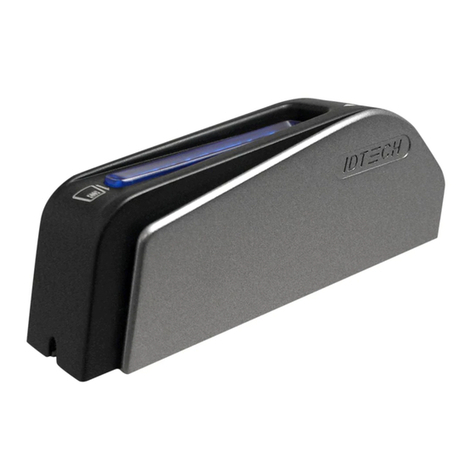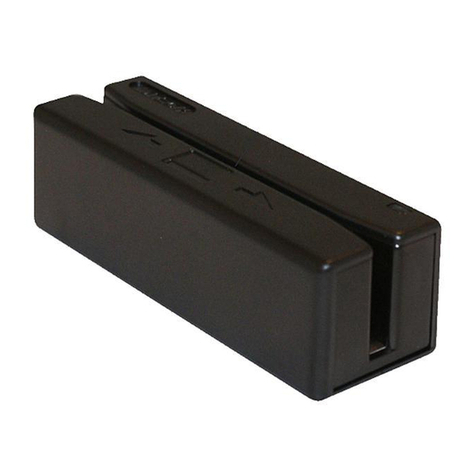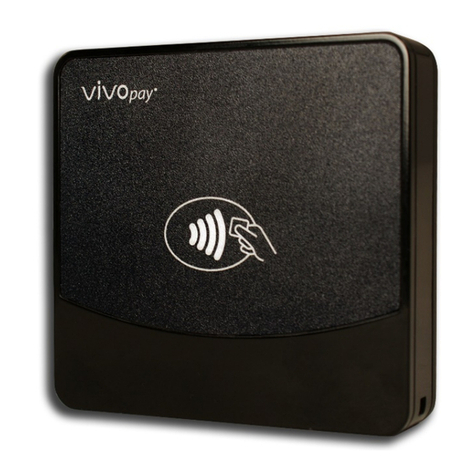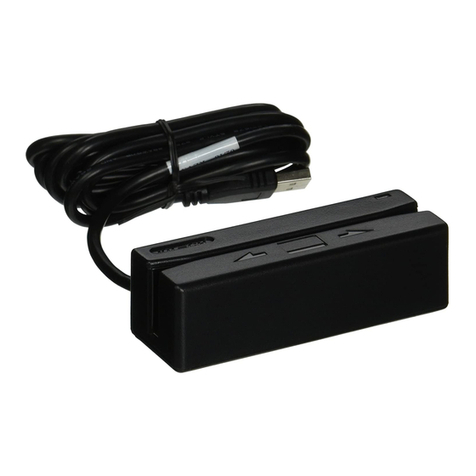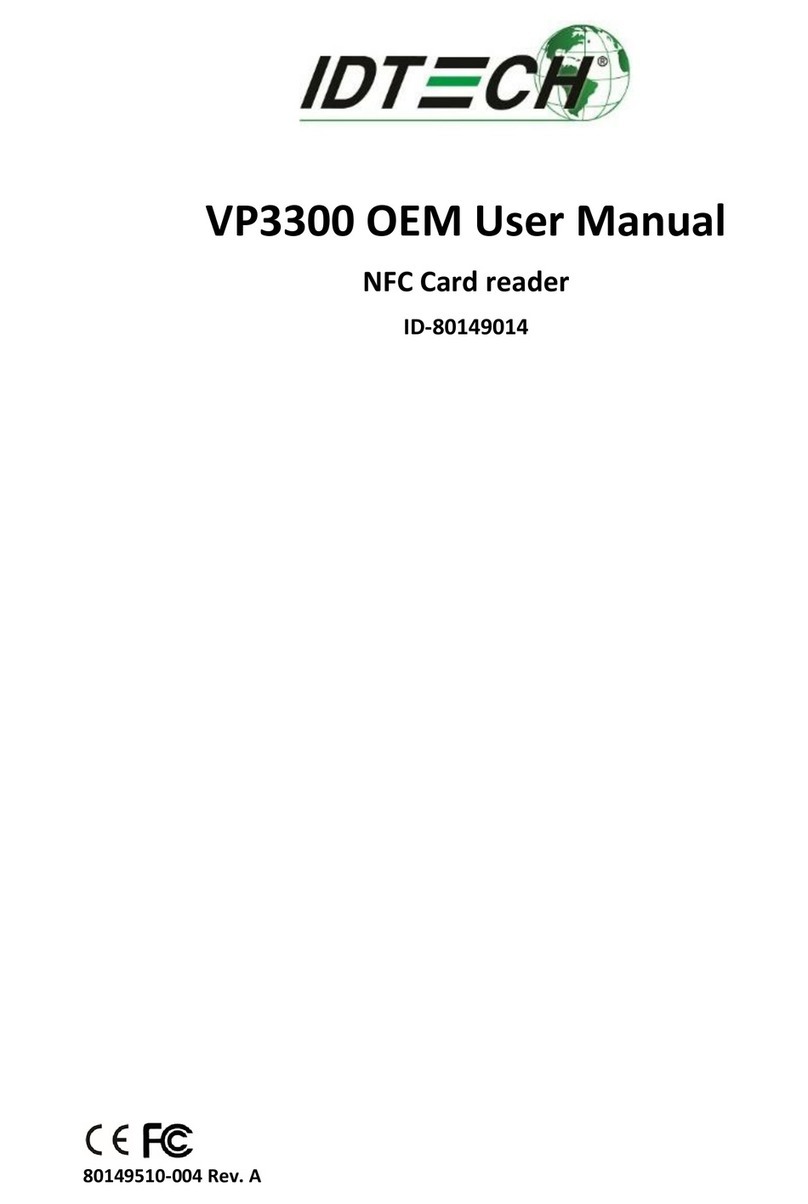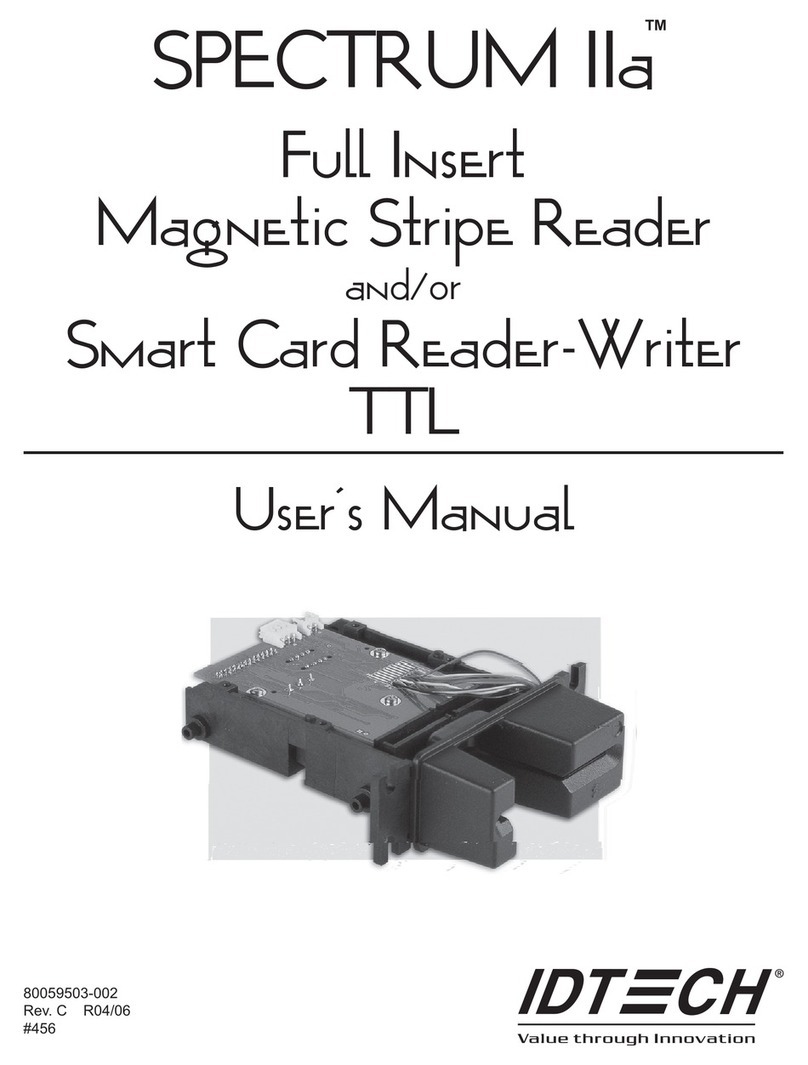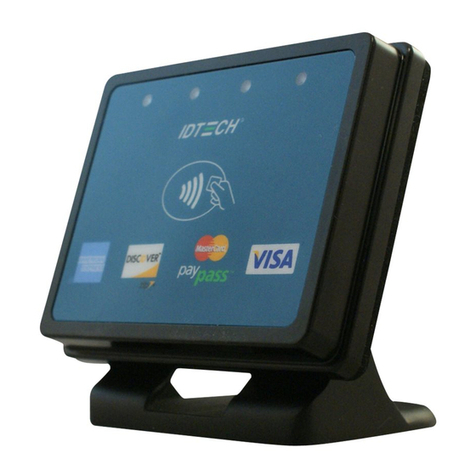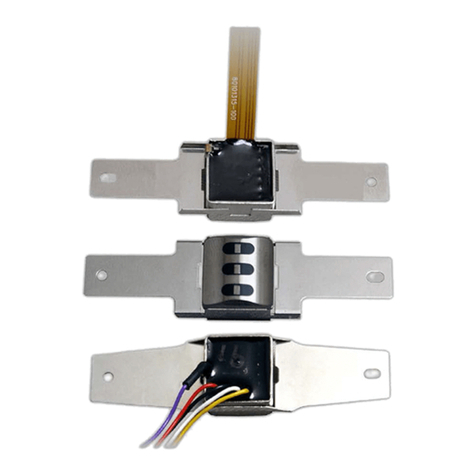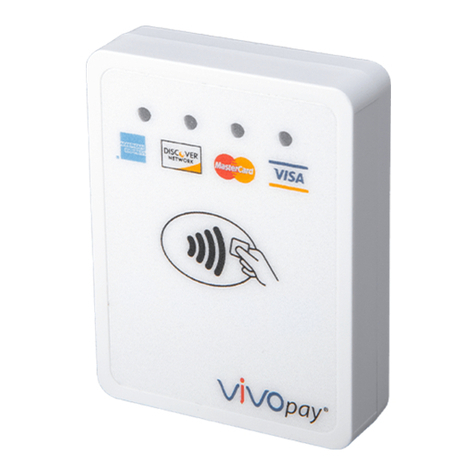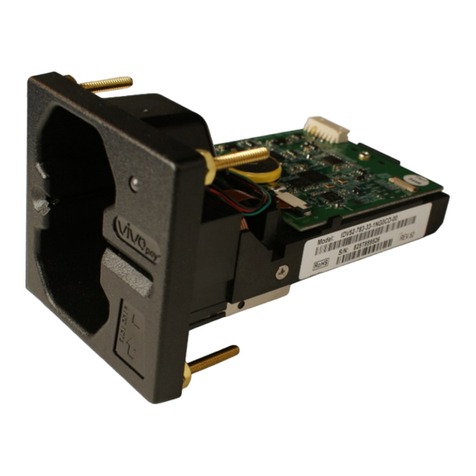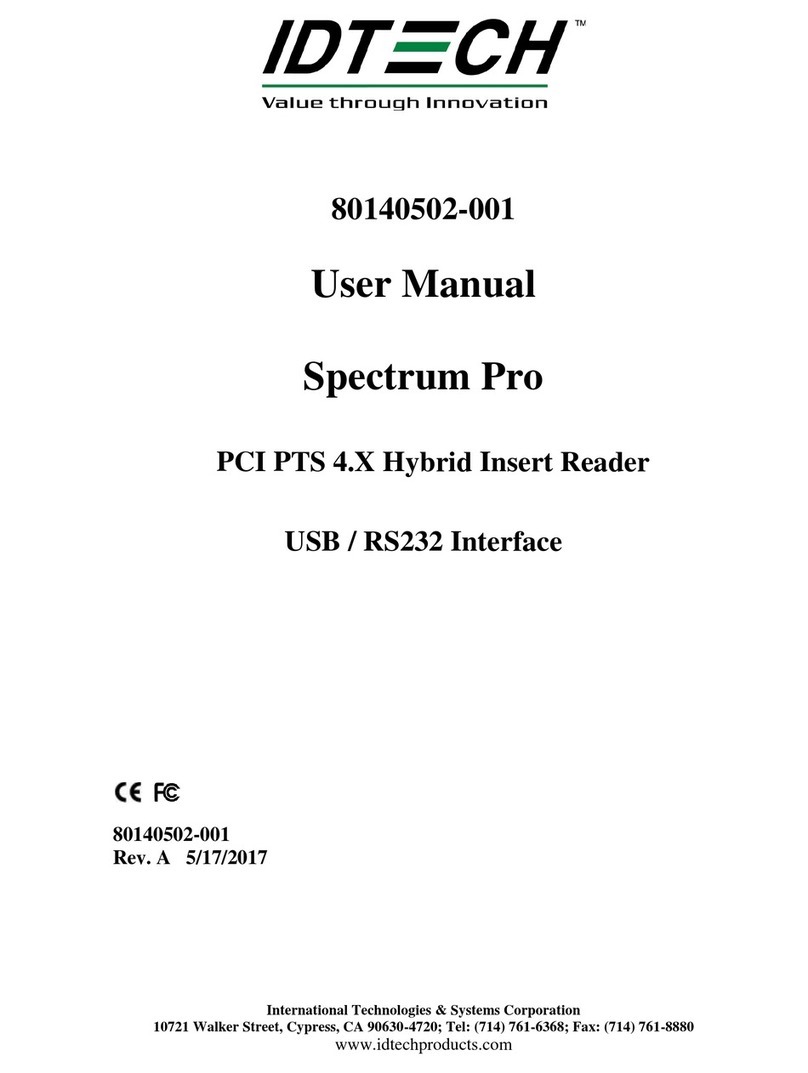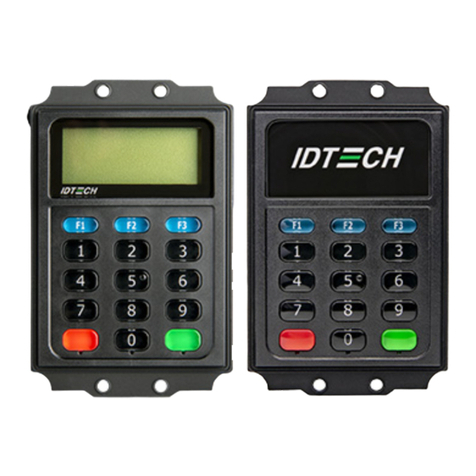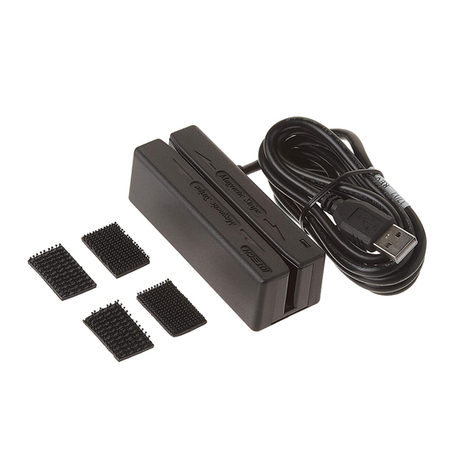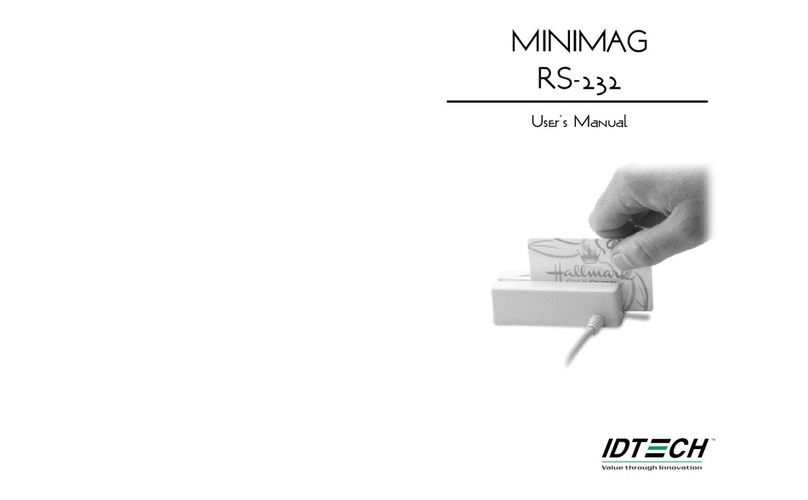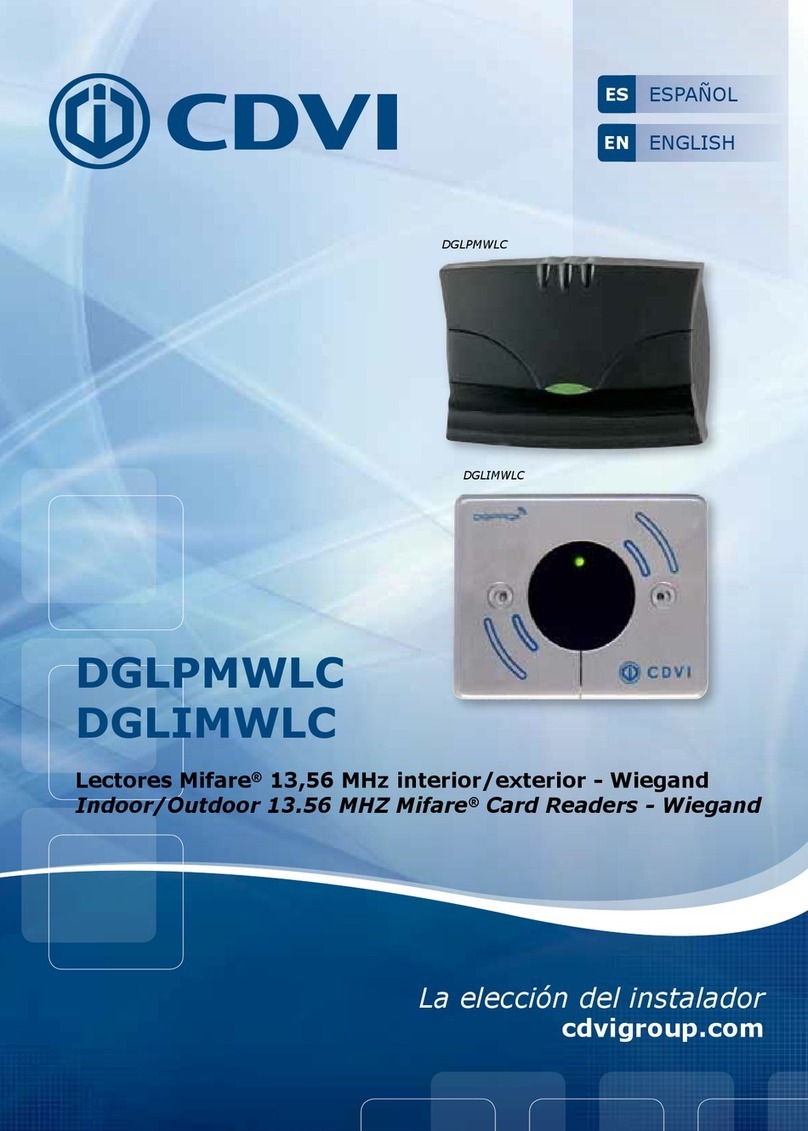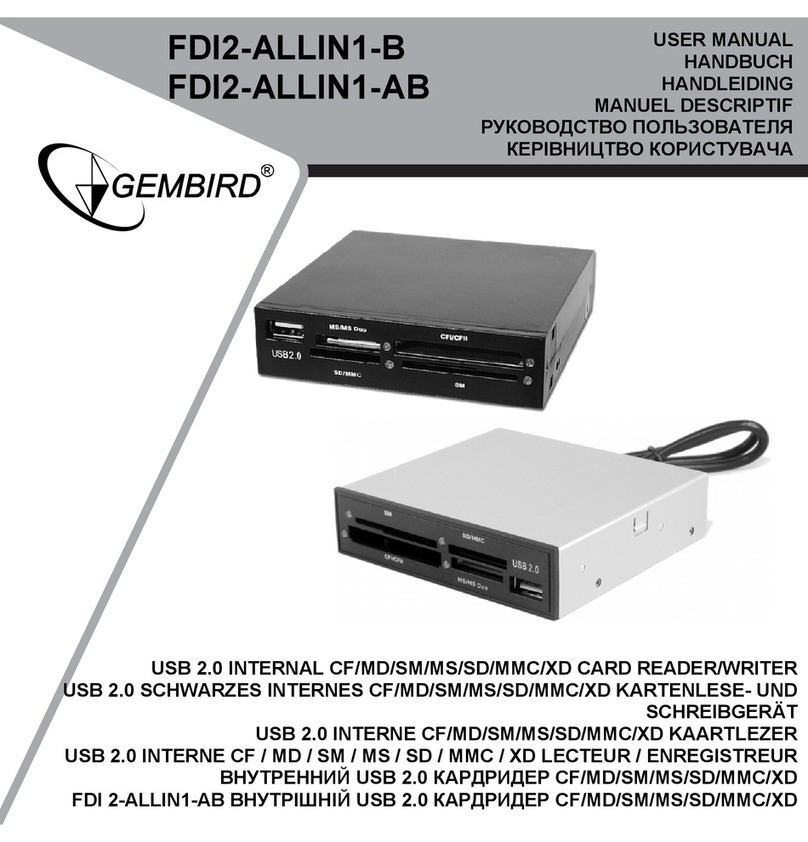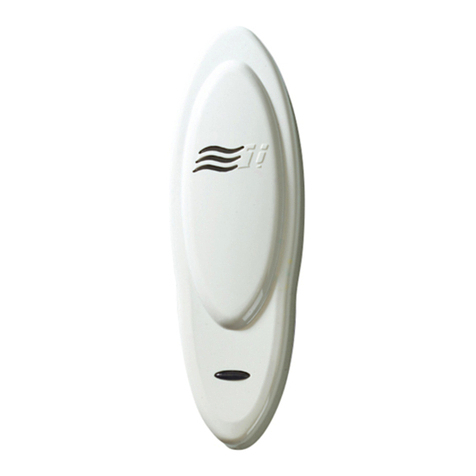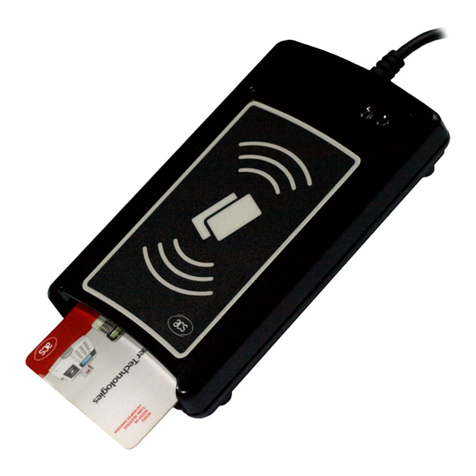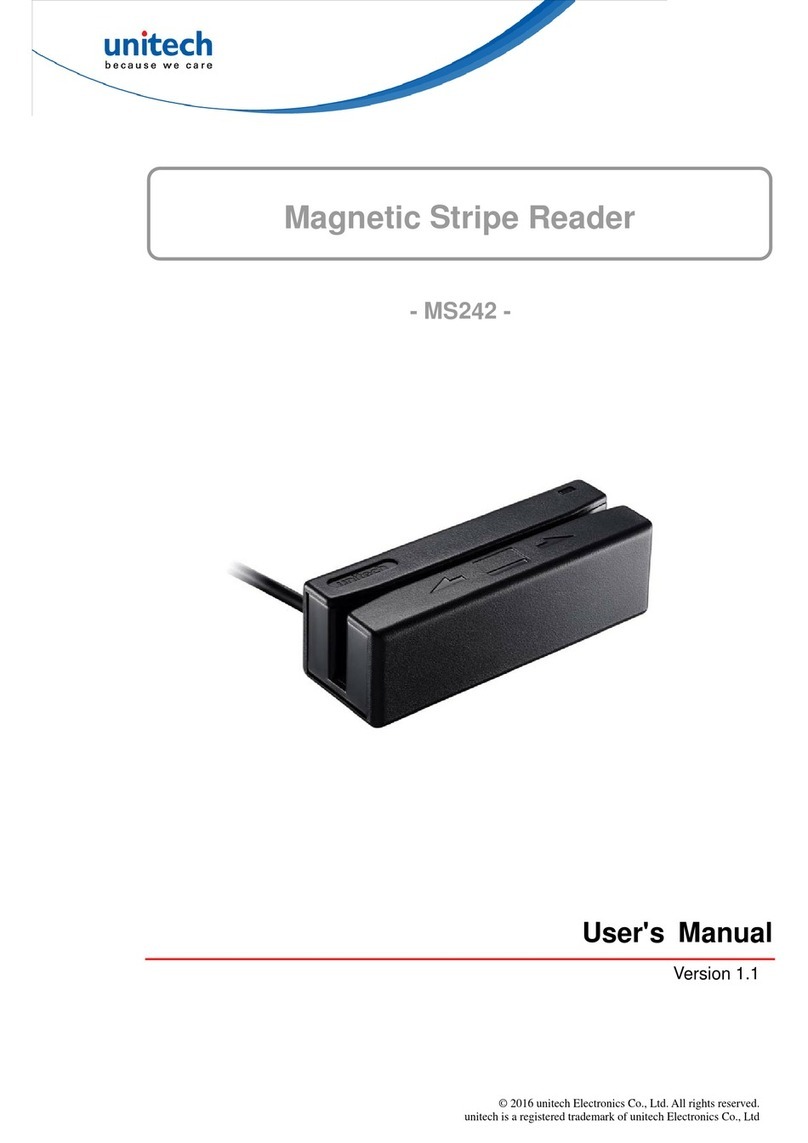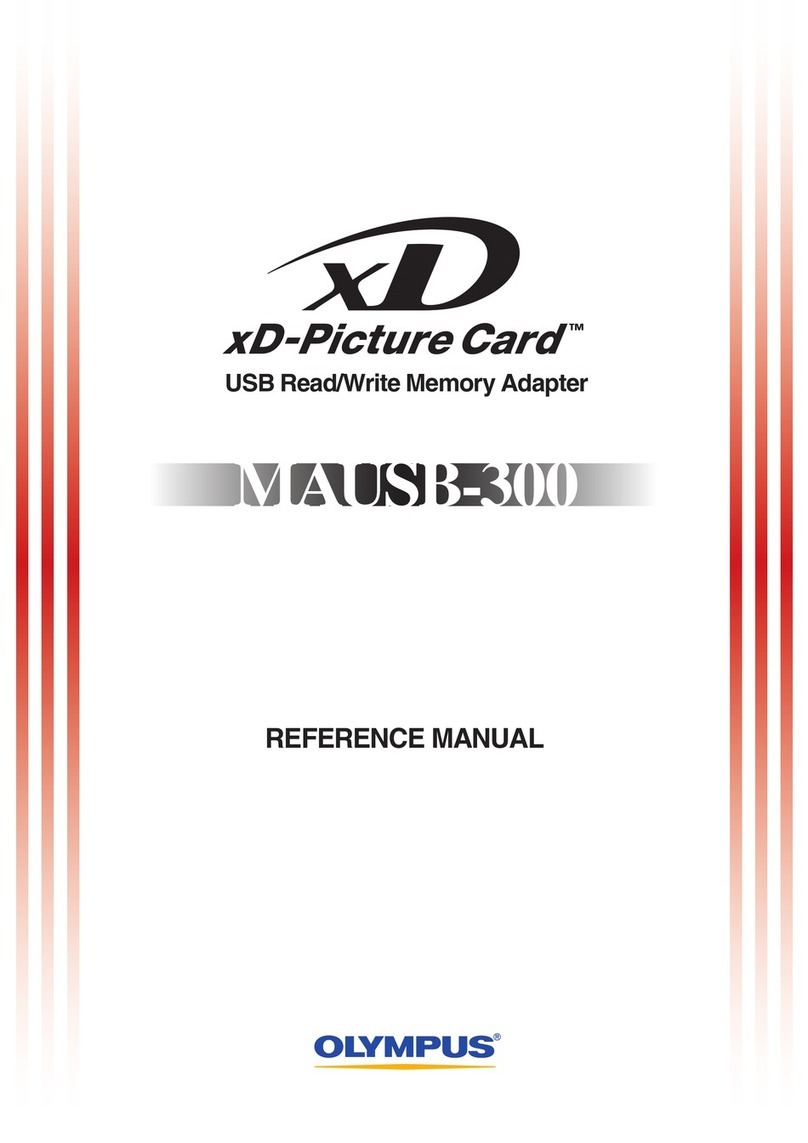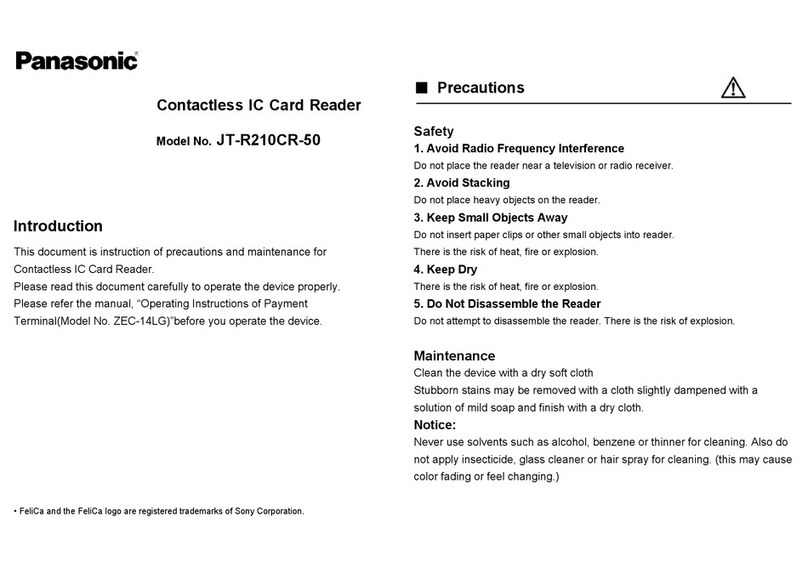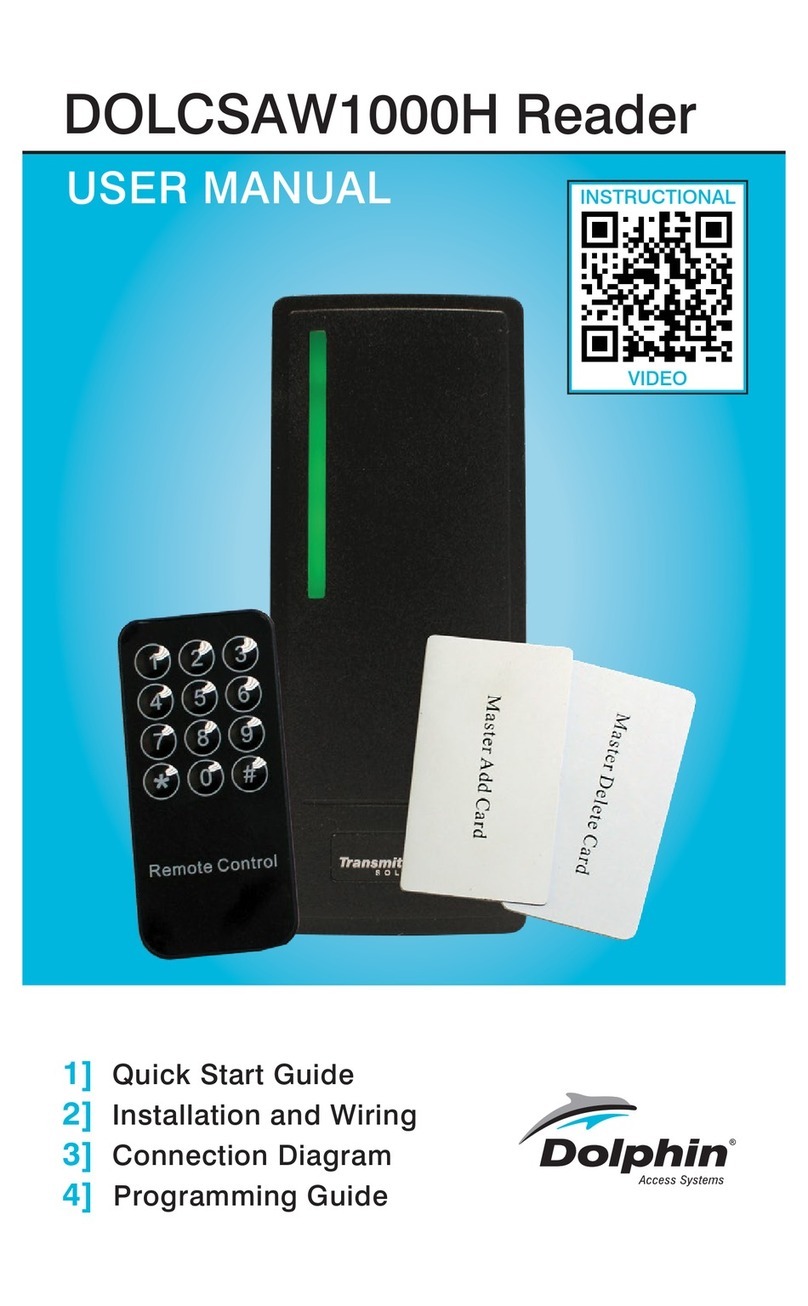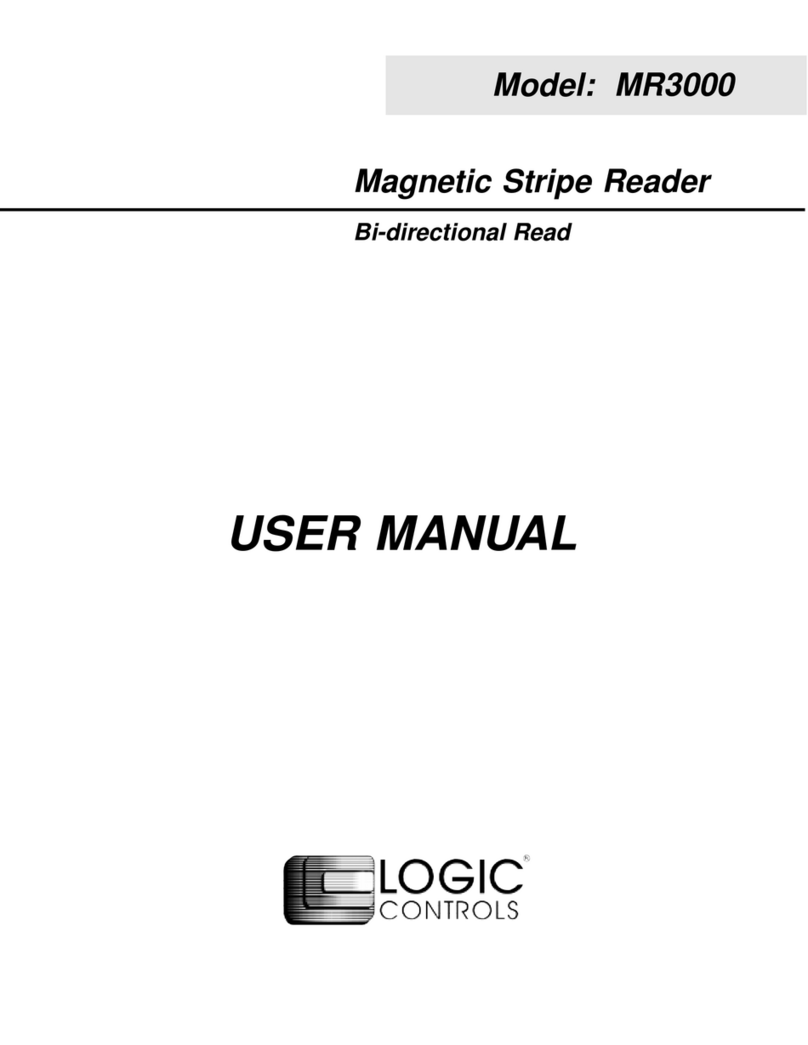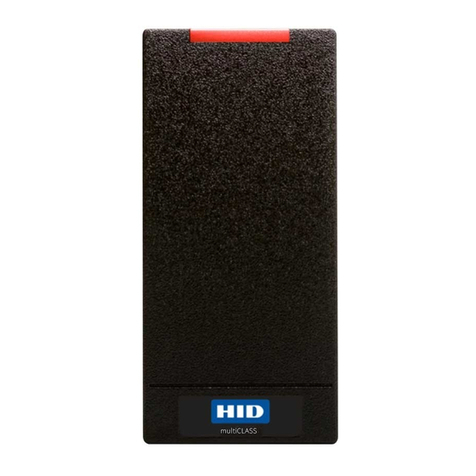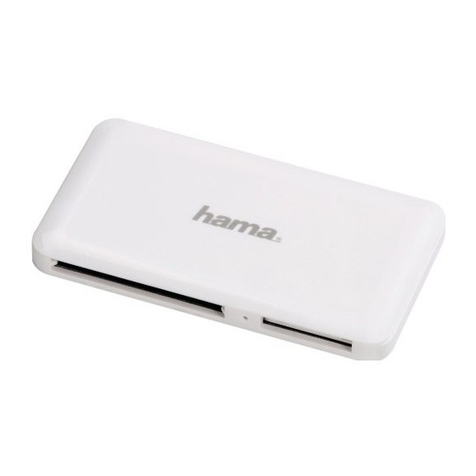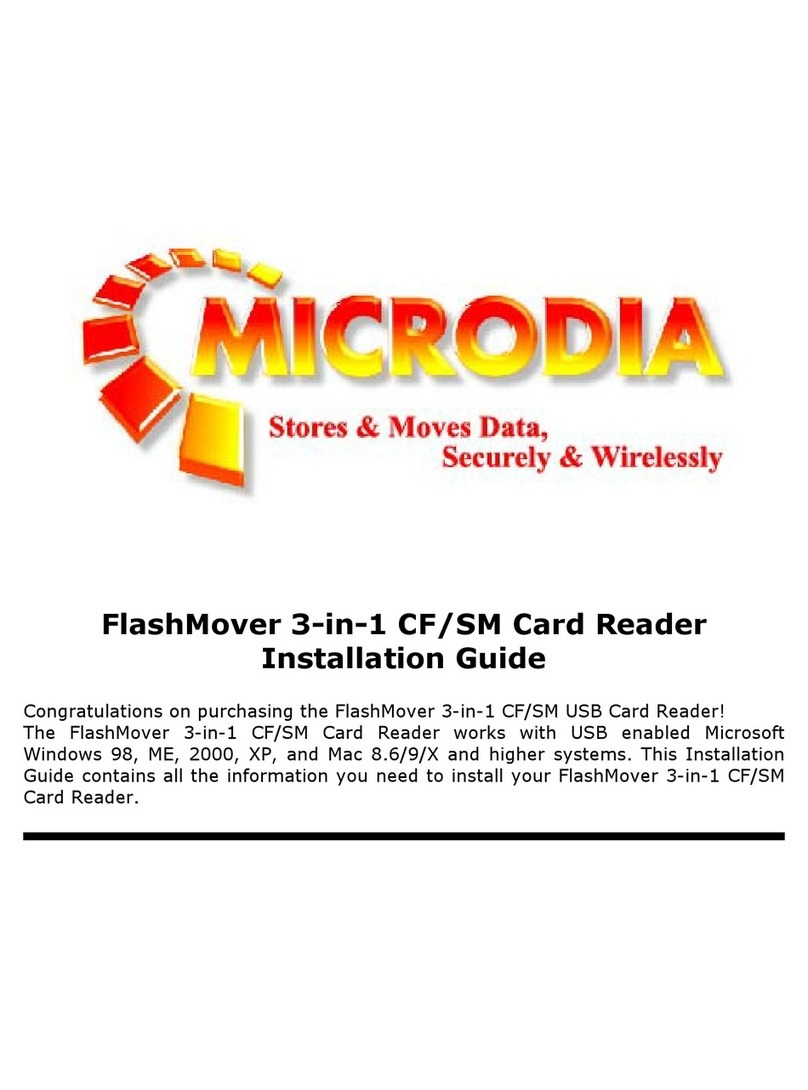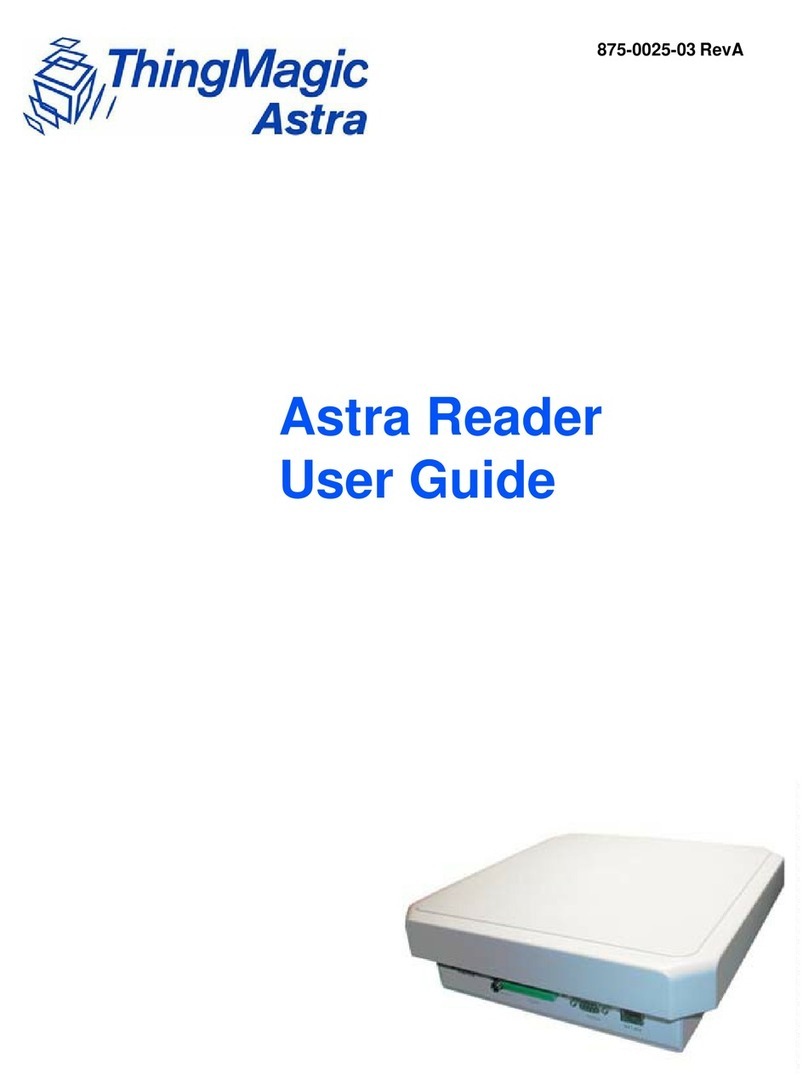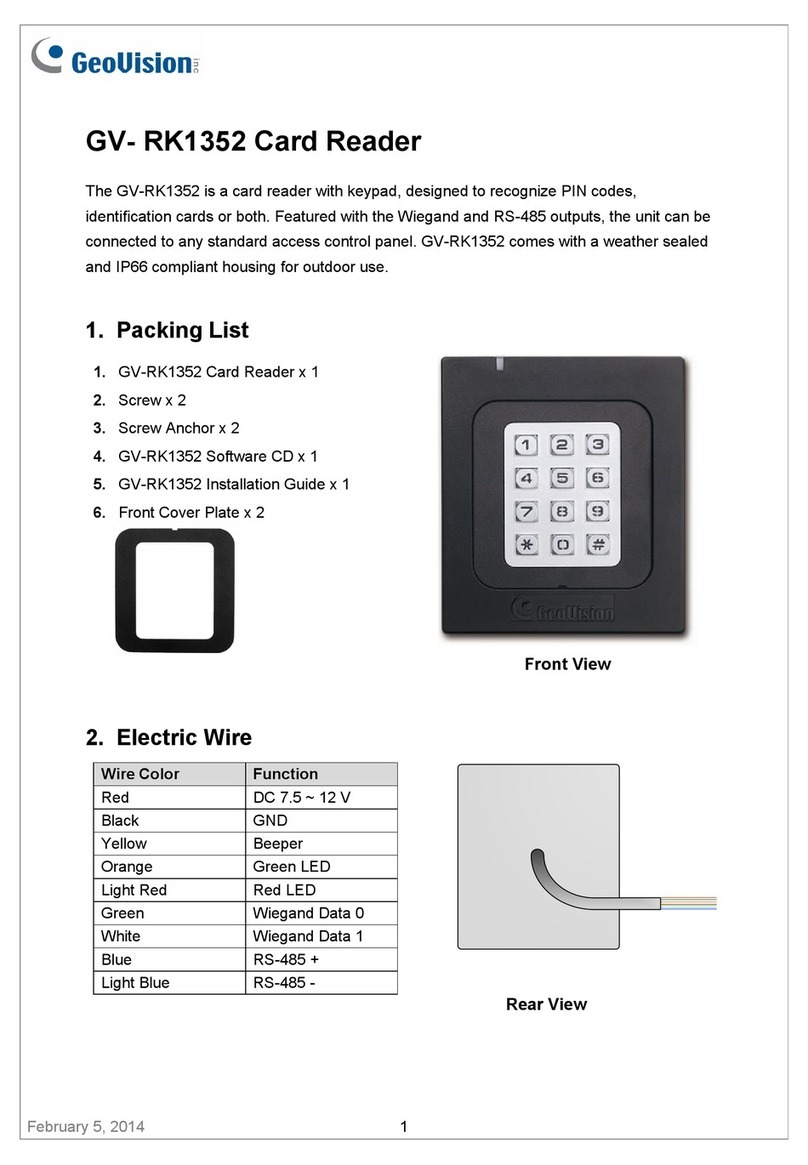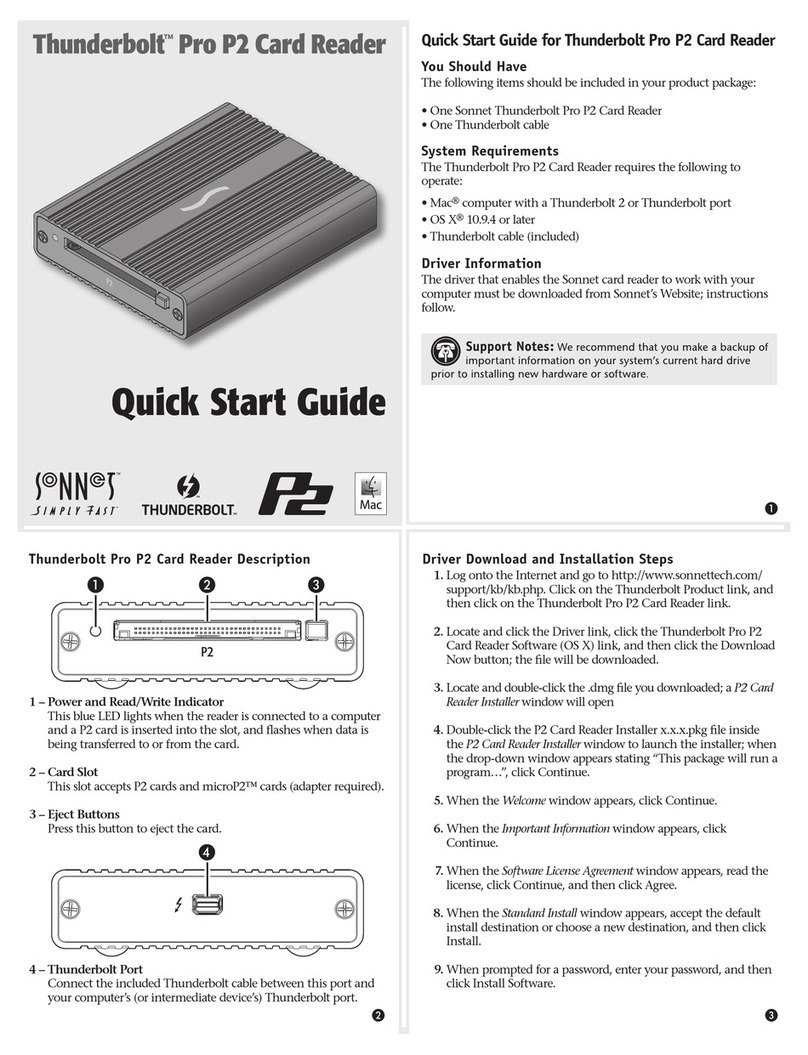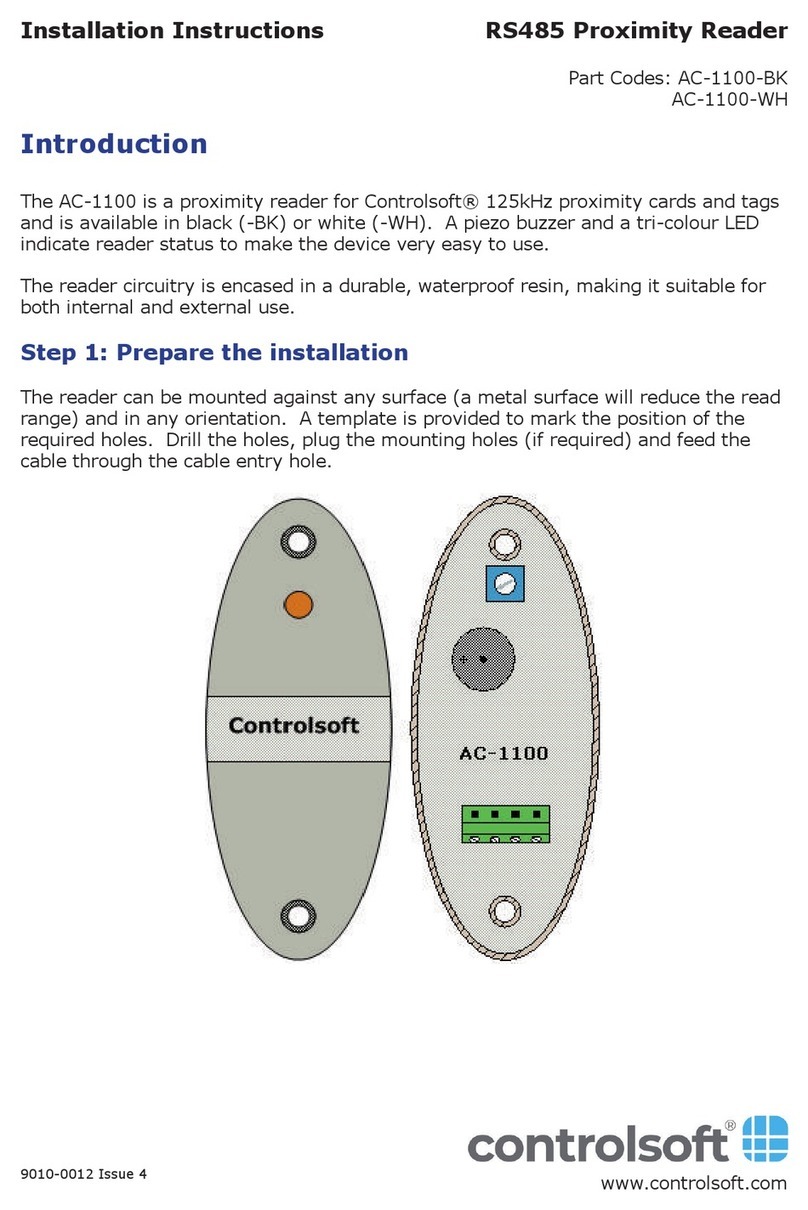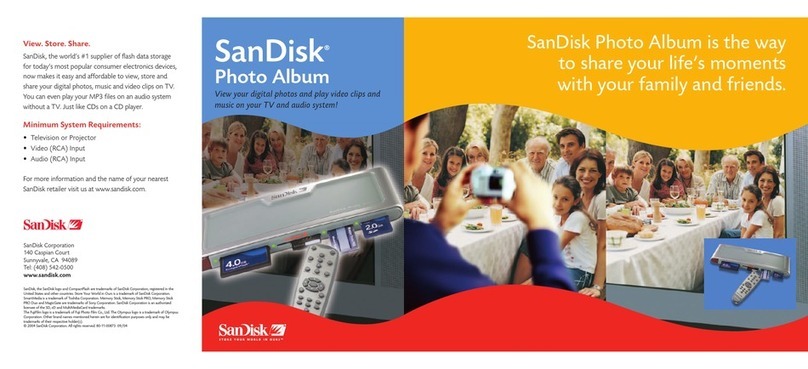ID TECH VP3350 User Manual
Page | 2
Cypress, CA 90630 USA
This document, as well as the software and hardware described in it, is furnished under license and may be used or copied
online in accordance with the terms of such license. The content of this document is furnished for information use only, is
subject to change without notice, and should not be construed as a commitment by ID TECH. While every effort has been
made to ensure the accuracy of the information provided, ID TECH assumes no responsibility or liability for any
unintentional errors or inaccuracies that may appear in this document. Except as permitted by such license, no part of this
publication may be reproduced or transmitted by electronic, mechanical, recording, or otherwise, or translated into any
language form without the express written consent of ID TECH.
ID TECH and ViVOpay are trademarks or registered trademarks of ID TECH.
Warranty Disclaimer
The services and hardware are provided "as is" and "as-available" and the use of the services and hardware are at its own
risk. ID TECH does not make, and hereby disclaims, any and all other express or implied warranties, including, but not
limited to, warranties of merchantability, fitness for a particular purpose, title, and any warranties arising from a course of
dealing, usage, or trade practice. ID TECH does not warrant that the services or hardware will be uninterrupted, error-free,
or completely secure.
FCC warning statement
This device complies with Part 15 of the FCC Rules. Operation is subject to the following two conditions: (1) this device may
not cause harmful interference, and (2) this device must accept any interference received, including interference that may
cause undesired operation.
The user manual for an intentional or unintentional radiator shall caution the user that changes or modifications not
expressly approved by the party responsible for compliance could void the user’s authority to operate the equipment.
Note: The grantee is not responsible for any changes or modifications not expressly approved by the party responsible for
compliance. Such modifications could void the user’s authority to operate the equipment.
Note: This equipment has been tested and found to comply with the limits for a Class B digital device, pursuant to part 15
of the FCC Rules. These limits are designed to provide reasonable protection against harmful interference in a residential
installation. This equipment generates uses and can radiate radio frequency energy and, if not installed and used in
accordance with the instructions, may cause harmful interference to radio communications. However, there is no
guarantee that interference will not occur in a particular installation. If this equipment does cause harmful interference to
radio or television reception, which can be determined by turning the equipment off and on, the user is encouraged to try
to correct the interference by one or more of the following measures:
•Increase the separation between the equipment and the receiver.
•Connect the equipment into an outlet on a circuit different from that to which the receiver is connected.
•Consult the dealer or an experienced radio/TV technician for help.
This device complies with FCC RF radiation exposure limits set forth for an uncontrolled environment.
The antenna(s) used for this transmitter must not be co-located or operating in conjunction with any other antenna or
transmitter and must be installed to provide a separation distance of at least 20cm from all persons.
Innovation, Science and Economic Development Canada (ISED) statement
This device contains licence-exempt transmitter(s)/receiver(s) that comply with Innovation, Science and Economic
Development Canada’s licence-exempt RSS(s).
Operation is subject to the following two conditions:
1. This device may not cause interference, and
2. This device must accept any interference, including interference that may cause undesired operation of the device.
L’émetteur/récepteur exempt de licence contenu dans le présent appareil est conforme aux CNR d’Innovation, Sciences et
Développement économique
Canada applicables aux appareils radio exempts de licence. L’exploitation est autorisée aux deux conditions suivantes :
1. l'appareil ne doit pas produire de brouillage, et
2. l'utilisateur de l'appareil doit accepter tout brouillage radioelectrique subi, meme si le brouillage est susceptible d'en
compromettre le fonctionnement.




















